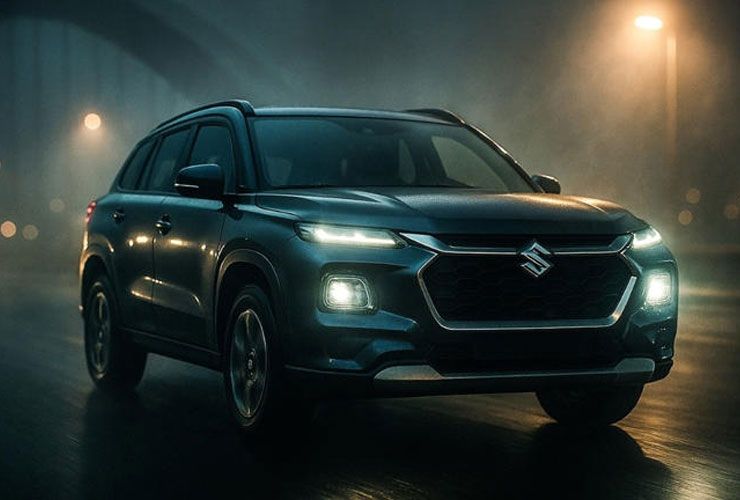Maruti Suzuki Revives Grand Vitara CNG With Safety and Features Boost


Maruti Suzuki has brought back the Grand Vitara CNG, and this time it’s not just about fuel savings. Priced from ₹13.48 lakh (ex-showroom), the updated variant adds key safety and comfort features that make it more than just a budget-conscious buy. But the price hike and feature redistribution raise some important questions. Is Maruti simply playing catch-up, or is this a strategic move to strengthen its position in the midsize SUV space?

The reintroduction of the Grand Vitara CNG is anchored around a clear update: six airbags are now standard. This is a notable shift from the outgoing version which only had dual airbags, despite sitting in a segment where rivals like the Hyundai Creta, Kia Seltos and even Toyota’s Urban Cruiser Hyryder offer more comprehensive safety kits. By aligning safety features across powertrains, Maruti is also ensuring that buyers of the CNG version don’t feel shortchanged compared to those opting for petrol variants.
That said, this is not a blanket upgrade across all trims. The CNG option is now offered in Zeta and Delta variants, with the Zeta variant now priced ₹43,000 higher than before. And with the reintroduction, the Sigma CNG variant has been dropped entirely. While that entry-level option offered a cost advantage, it did come with barebones safety and convenience features.

Beyond airbags, Maruti has added a rear seatbelt reminder, updated rear AC controls, and redesigned head restraints for added safety. These might seem minor, but in a cost-sensitive and family-focused segment, such updates can influence buying decisions.
The headrests are now adjustable in the rear, which was a long-standing gripe for many users. While not headline-grabbing, such changes reflect a growing attention to occupant protection, which Maruti has traditionally been criticised for underplaying.
Still, some might argue these changes are overdue rather than revolutionary. After all, rival brands have been offering these features for a while, often at comparable or lower price points.
Under the bonnet, it’s the same 1.5-litre K15C mild-hybrid petrol engine, mated to a 5-speed manual gearbox. When running on CNG, the power drops to 87.8 bhp and 121.5 Nm of torque, which is lower than the petrol mode. As before, there is no automatic option with the CNG variants. Fuel economy, however, remains a strong suit, with a claimed 26.6 km/kg efficiency figure.
For buyers looking purely at running costs, this is still among the most frugal SUVs in the segment. However, performance-minded users will likely stick to the petrol or strong hybrid options, as the CNG mode still lacks the punch required for frequent highway use or full-load performance.
What makes this relaunch interesting is the timing. With increasing attention on vehicle safety, both from consumers and the government, Maruti could be responding to the pressure of meeting upcoming Bharat NCAP test norms.
A CNG SUV with six airbags signals that Maruti is willing to revise its long-standing approach of prioritising efficiency over safety. This is also evident from recent model updates across its line-up, such as the Fronx and Brezza, which are now also offered with more safety equipment.
At the same time, this may also be a strategic attempt to pad up the Grand Vitara’s appeal in a crowded market. While its hybrid variants have been well received, the CNG version was more of a niche play when first launched. By improving its safety and equipment package, Maruti is likely targeting both fleet operators and private buyers who want a safer yet economical SUV.
The updated Grand Vitara CNG doesn’t break new ground, but it does address some of the key shortcomings of the earlier model. With six airbags, more safety features and basic comfort upgrades, Maruti is clearly listening to the market. However, with no change in powertrain and a slight price bump, it still feels more like an incremental improvement than a full rethink.